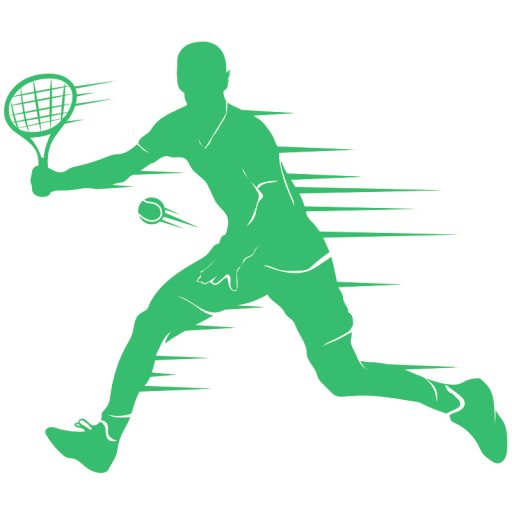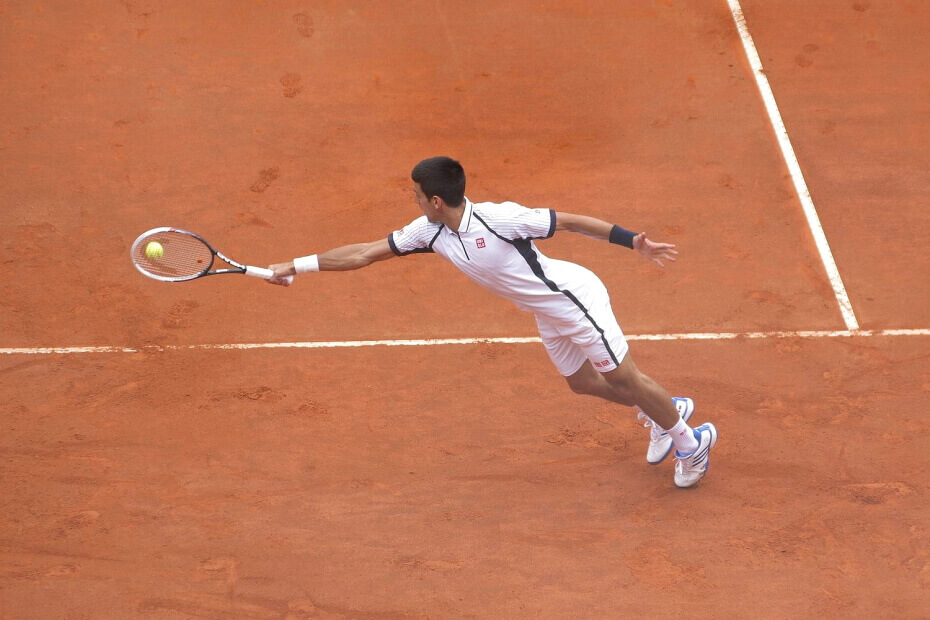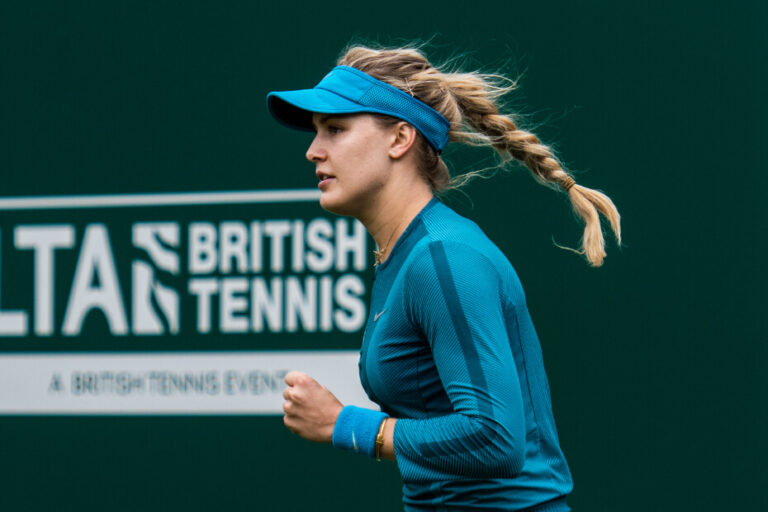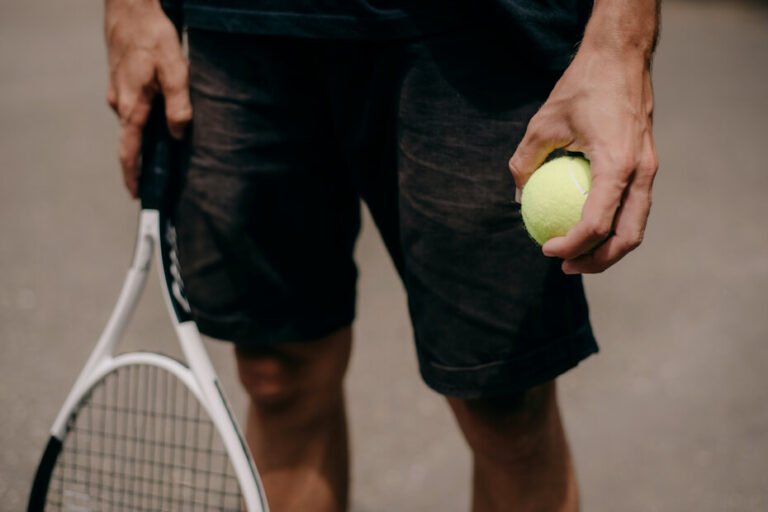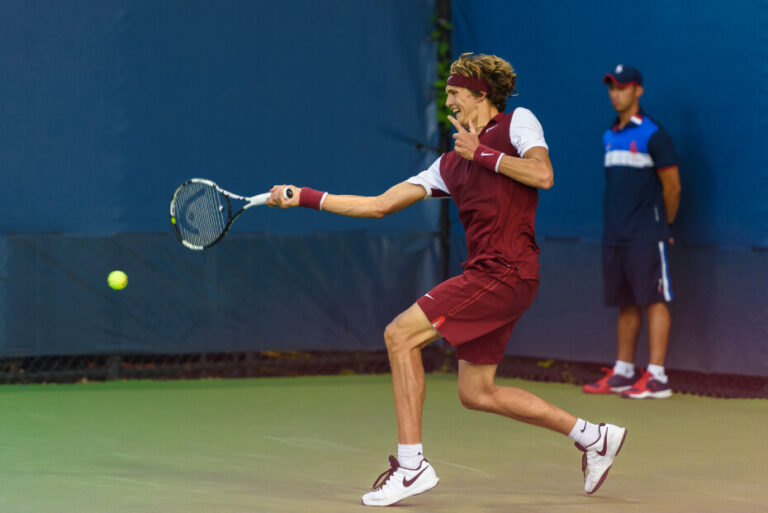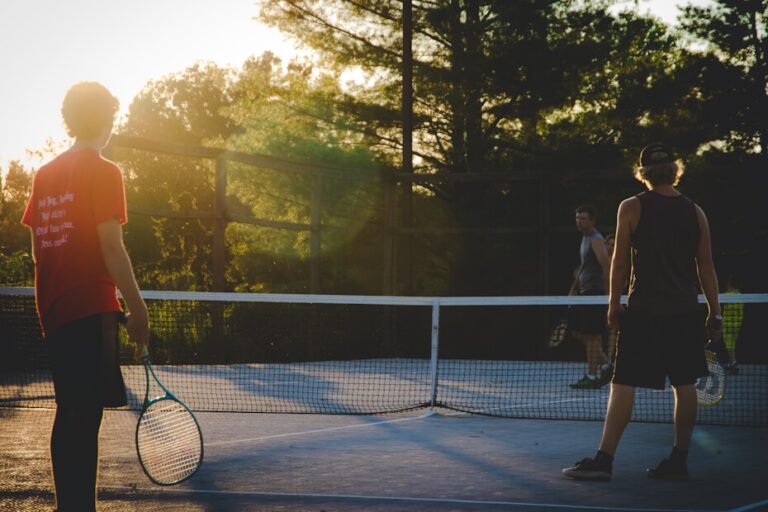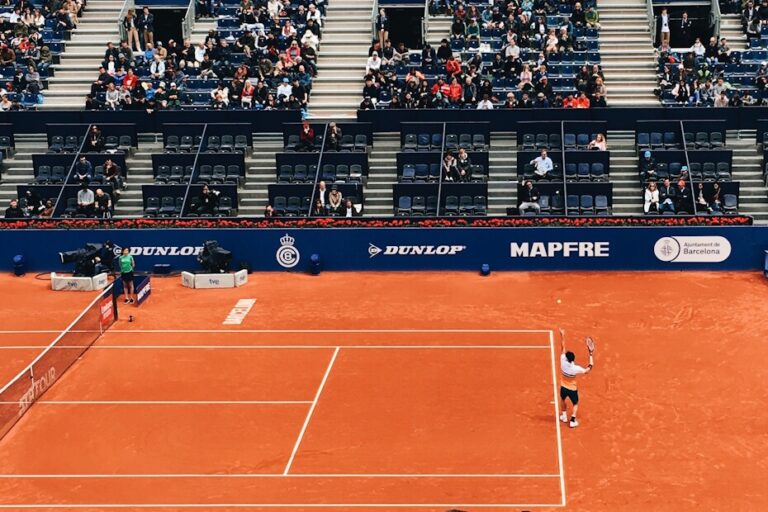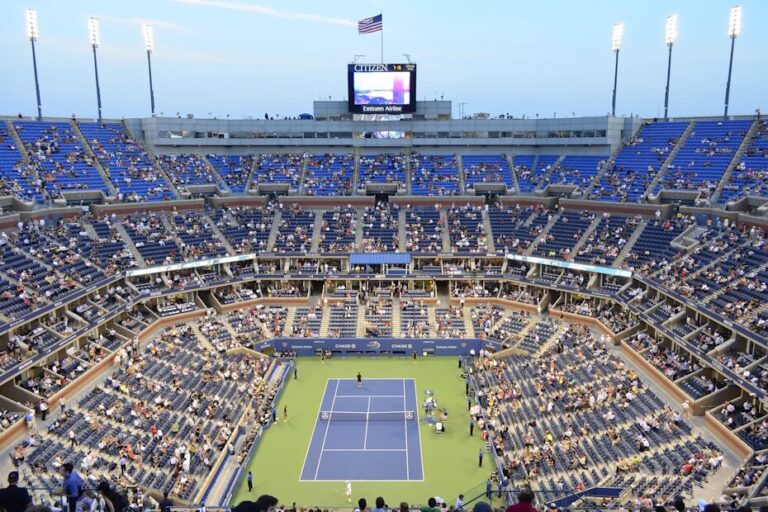Learning any new sport can be confusing and time-consuming at the best of times, yet learning a complex sport such as tennis? That takes some real skill, patience, and knowledge.
Tennis may be a sport that has been played for centuries, but it is still very difficult to understand if you’re a beginner and are new to the sport. If you want to become a tennis ace, however, you need to familiarize yourself with the rules of the game, and the game itself, which means learning the shots.
Watching the pros on the TV during a Grand Slam tournament is fun and exciting, but as they are so good, they do make the game look effortless. Each serve is flawless, each shot is executed with pinpoint accuracy, and each volley flows fluently. The truth of the matter is that, despite players like Novak Djokovic and Roger Federer making them look easy, even the supposedly simpler tennis shots can be tricky to pull off.
To help you up your tennis game and pull off some fantastic tennis shots with no issues at all, here’s a look at several of the different types of tennis shots.
Basic Tennis Strokes
When learning how to perform tennis shots as a beginner, before you even think about looking into some of the more complex shots, you first should familiarize yourself with these 6 basic tennis strokes.
Each game of tennis consists of six basic strokes/shots, which are:
- Serve
- Forehand groundstroke
- Backhand groundstroke
- Forehand volley
- Backhand volley
- Overhead smash
These are the basic fundamentals of a basic game of tennis, of course, there are plenty of variations of these shots, as you’ll read about a little later on, but first off, if you are serious about mastering the sport of tennis, you need to understand these 6 basic tennis strokes.
The Importance of Good Technique
Don’t worry, we’ll find out more about the different types of tennis strokes, as well as their variations, a little further on. First off, however, we need to talk to you about the importance of good technique.
When people lift weights in the gym, you’ll constantly hear personal trainers and fitness experts talking about the importance of executing each exercise with good technique, or ideally, with perfect technique. The reasons for this are to ensure that the exercise works the target muscles it is supposed to be working correctly and to ensure that the person lifting the weights reduces their risk of injury. Why are we talking about weightlifting when this is supposed to be a tennis article? Well, very simply, because the same principle applies.
Tennis is a sport that relies heavily on good form and technique. Each shot/stroke in tennis is a sequence of movements which is known technically as a ‘kinetic chain‘.
This chain begins at the tennis player’s feet and extends upwards through their legs, hips, shoulders, chest, arms, and wrist, up to the tennis racquet itself when it strikes the tennis ball. Again, it sounds technical, but basically, this kinetic chain of movement allows for the build-up, the storage, and the transfer of energy to enable the tennis player to generate power for their shot.
If your technique is off, the kinetic chain will be broken, meaning that you won’t generate the power or the accuracy needed for your shot. Not only that, but it will also increase your risk of injury. In tennis, some of the most common injuries include:
- Sprained wrist
- Pulled/torn hamstring
- Rotator cuff injuries
- Tennis elbow
- Pulled/torn groin
Basically, to execute a tennis shot with perfect power, accuracy, and precision, while also minimizing your risk of injury, you need to ensure that all parts of your body are working together in synergy. Rotate your shoulder incorrectly, or hold the racquet in the wrong place, and the kinetic chain will be broken, and your shot won’t be as good as you would have liked.
Types of Tennis Shots
Okay, so now that you know about the six basic fundamental tennis shots, and why proper form and technique are so important, let’s dig into the good stuff and start learning more about the many different tennis shots out there.
In no particular order of importance, here’s a look at the different types of tennis shots.
Serve
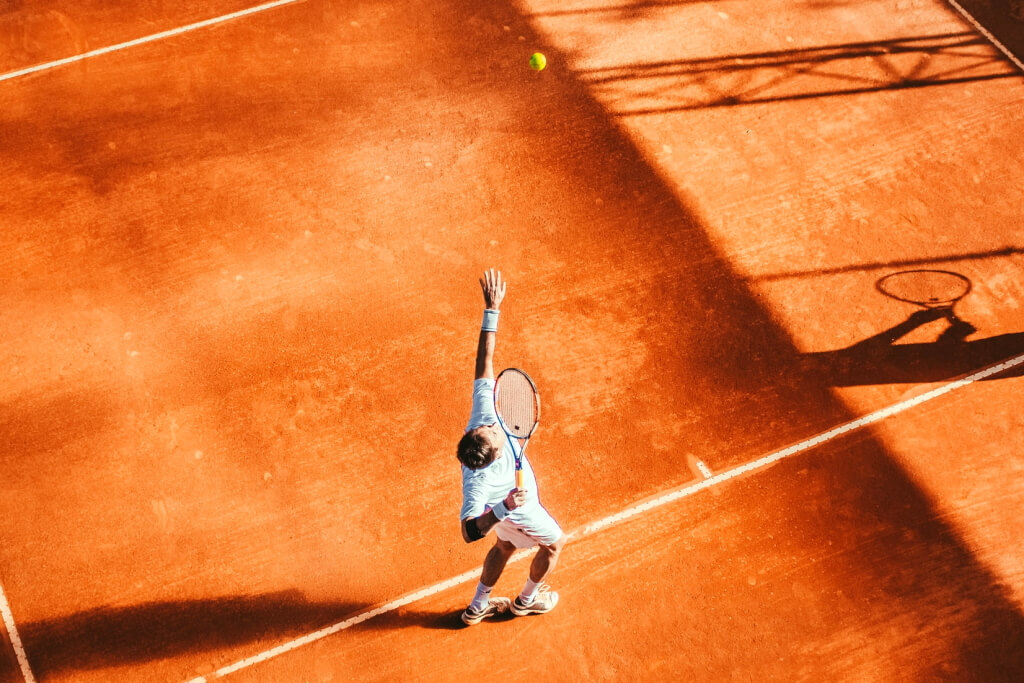
We’ll begin this section by looking at the shot that begins a game of tennis – the serve.
A tennis serve is a shot used to begin each point in every match of tennis. This stroke is the one that kicks off all of the action.
The interesting thing about a tennis serve is the fact that, in a game of tennis, this is the only stroke where a player has full control of the ball. They get to decide how they strike it, how much power to put on it, and where they’d like it to land.
During a serve, a player has two chances to hit a perfect serve, this is known as ‘first serve’ and ‘second serve’.
If a player’s serve strikes the net or doesn’t land in the opposing player’s service box, a fault will be called. The server will then perform their second serve. If another fault is called, the server concedes a point.
Serves are usually performed with a continental grip, which enables the players to hit a variety of different types of serve shots, intending to hopefully outsmart their opponent.
Kick Serve
When utilizing the continental grip, one type of serve that players can execute is what is known as a kick serve.
A kick serve is very difficult to deal with as servers generate a vast amount of topspin as they strike up on the ball and make a snapping motion with their wrist as they hit it. The idea here is that the ball travels comfortably over the net, and as it lands in the service box, it has a significant amount of topspin on it, making it very difficult to deal with.
The ball bounces awkwardly as it is much higher than would be needed to perform a backhand or a forehand. Usually, players want the ball to be roughly waist-high when they return a serve. A kick serve is usually much higher, however.
Flat Serve
A flat serve is more of a basic serve, in the sense that it has a very little topspin on it if any at all.
While these can be easier for your opponent to deal with, the great thing about executing a flat serve is the fact that it will allow you to put more speed and power on it, so you can really smash it at your opponent, giving them less time to deal with it.
The downside to these types of serves is the fact that they are harder to hit with precision and accuracy, so usually flat serves will be performed as a first serve only, to ensure that, in the event of a fault, they can hit a more accurate second serve the next time.
Slice Serve
Finally, we have the slice serve.
When performing a slice serve, players will strike the tennis ball’s outer edge to produce a type of sidespin that skids when it lands on the tennis court and bounces erratically in the direction of the spin.
When struck out wide, this type of serve is very impressive and effective as it forces the player off the side of the court to deal with the shot, which opens up the potential for securing a point with your next shot.
Passing Shot
Now, up next, we have what is known as a passing shot.
A passing shot is executed when one player runs towards the net in an attempt to try for a volley, except for the fact that the opposing player located at the baseline will hit a groundstroke (more on those next) that passes the player by the net on either side of them, just beyond their reach.
The passing shot is a tricky shot to master, but it is incredibly important, especially if you aren’t the best at lobbing the tennis ball, or when facing an aggressive net player.
Master the passing shot, and your game will improve dramatically.
Groundstrokes
As mentioned prior, we’ll now learn about the shot known as the groundstroke and the different variations that are out there.
A groundstroke is usually hit as a backhand or a forehand, usually around a few feet away from the baseline.
Backhand
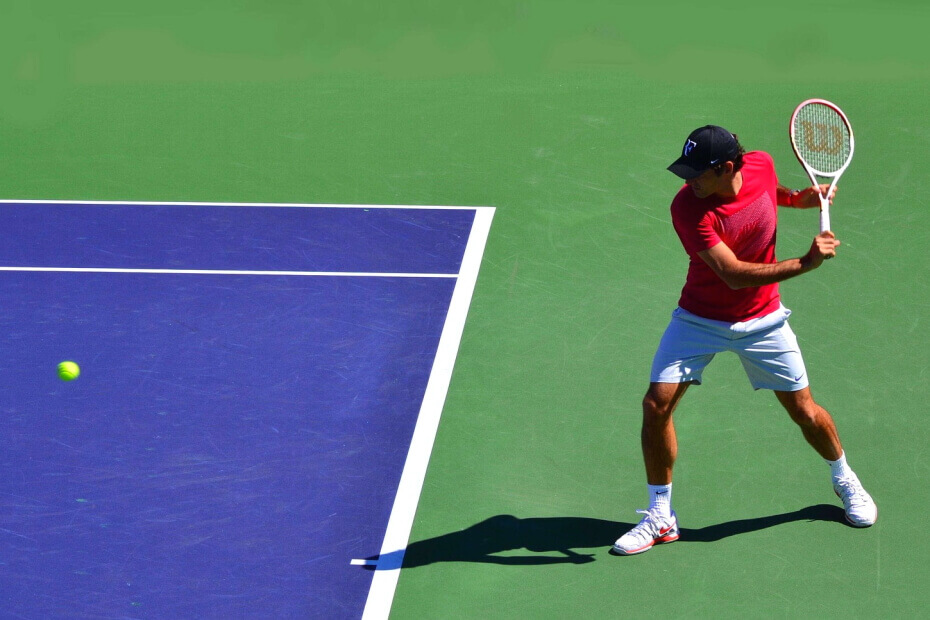
A backhand in tennis is one of the most common shots you could ever wish for, but that doesn’t make it any less accurate or powerful.
Backhands, also known as backhand groundstrokes, are typically considered to be the second most common tennis stroke to learn as a beginner, second only to a forehand.
Backhanded strokes are played on the non-dominant side of the body, so on the left side if you’re right-handed, and on the right side if you’re left-handed. Because of this, you’ll find that most backhands are played by players with both hands on the tennis racquet.
To grip the handle when performing this shot, your dominant hand should be on the bottom of the grip, with your non-dominant hand placed just above it. There are a few tweaks you can do. For example, if you play a one-handed backhand, this will give you more reach so you can reach balls that have landed further away from you. If you play a double-handed backhand, however, you get more control over the ball so you can give it more accuracy, topspin, and control.
Forehand

If you are learning tennis as a complete beginner, the forehand is the first stroke you will likely be taught.
This is the most basic of all tennis shots, but please do not think that it’s purely for beginners because that is simply not the case at all.
With this groundstroke, your main shot will be hit across the body using your dominant hand. Your follow-through will be over your shoulder, and if struck correctly, the ball should travel in a low to high trajectory.
You can hit a forehand shot either with one hand or with both hands, just like a backhand. Usually, however, you’ll need good reach when executing an effective forehand shot, which means that you should use a one-handed grip most of the time.
In the event of you requiring more power from your forehand stroke, however, you may wish to use a two-handed grip as this has been known to generate more power. The downside, of course, is that you may substitute some accuracy and precision for power here, though it is still a very effective weapon to have in your arsenal.
Topspin Groundstrokes
Usually, you’ll find that the forehand and backhand will be the first strokes that players learn.
Forehands are struck with the dominant arm and hand, whereas backhands are hit either with two hands if performing a two-handed backhand, or with the one dominant hand if the player is executing a one-handed backhand.
Doublehanded backhands, for example, are performed using the continental grip while using the dominant hand and arm. The player’s weaker hand should be placed just above their dominant hand on the racquet handle.
One-handed backhands however are usually carried out utilizing a reverse Eastern grip on the racquet.
Most forehand and backhand strokes generate topspin. This enables the player to hit a more aggressive shot, and also play a shot that is more likely to be accurate and land in the opponent’s court.
Flat Groundstrokes
If you play a flat backhand or forehand, you will typically play the shot as detailed above, without putting much/any topspin on your shot.
To hit this shot more effectively and accurately, you will likely find that an Eastern forehand grip is more effective as a result of the angle of the racquet.
When playing a flat backhanded shot, however, you’ll typically find that either a one-handed grip or a two-handed grip will work very effectively for performing a flat shot, so you needn’t worry about any unwanted topspin.
You will usually be required to hit a flat backhand or forehand when you don’t wish to allow your opponent much time to react. As effective as topspin backhands/forehands can be, the downside is the fact that they do bounce higher and give opponents a little more time to react and play their return shot.
Flat groundstrokes, however, will do the opposite. These balls bounce low and skid erratically across the surface of the tennis court, making them incredibly tricky shots for your opponent to deal with.
Slice Groundstrokes
We’ve looked at topspin forehand and backhand shots, but now we have the exact opposite – the slice.
Slice backhand/forehand shots are performed by striking the ball underneath, almost brushing it, thereby creating a backspin.
Both a backhand slice and a forehand slice are struck with one hand, usually using a continental grip. What’s great about this shot is that it can be used to alter the pace of the game. For example, if you’re engaged in a fast-paced rally, hitting a backhand slice could slow things down and allow you time to recover and get into position for your next shot.
Usually, a backhand/forehand slice is used as a defensive shot as it can buy you time, and sometimes catch your opponent unaware.
Volleys
If you’re serious about stepping up your tennis game, you need to familiarize yourself with volleys.
In tennis, volleys are basically shots that players strike without allowing the ball to land and bounce on their side of the court.
Because of how volleys are played, if you connect sweetly with a volley, you’ll find that you can generate a lot of power that your opponent will hate dealing with. Not only that, but you can also catch them out of position when blocking their shots with a volley.
Forehand and Backhand Volley
Forehand volleys are actually very similar to forehand groundstrokes as you strike them with your dominant hand.
When performing a backhand volley, however, you will hit the shot using your dominant hand, on the weaker side of your body. So, you’d hit the shot on your left side with your right hand, and your right side with your left hand.
Volleys are very aggressive shots that are designed to make your opponent run and really work to hit the ball back to you in time. Volleys are great shots to master because you can smash them with a lot of power, and use them to interrupt rallies.
Usually, you will hit a volley when you are positioned closer to the net, meaning that timing is everything. If you mess up your timing and hit the net on your side, you’ll drop a point. If you smash the ball too hard and it bounces out of play, you’ll drop a point.
Volleys are performed with a continental grip resulting in a neutral racquet face, which allows you to deflect balls back to your opponent more efficiently. By using a continental grip, you can control the ball and get it up and over the net, without having it go too long.
With a volley, you lift the racquet up and block it in front of your body as quickly as possible, which means that you don’t get any time for a backswing or a wind-up.
Most of the time volleys are performed with one hand, although sometimes players will use both hands, especially if they are weaker or are concerned about damaging their wrist.
Half Volley
Those of you who are familiar with football/soccer will know what a half volley is, and the same principle applies here when talking about tennis.
A half volley is basically a shot where the player strikes the ball off the ground at virtually the exact same time as it meets the floor, meaning that the ball is struck when it is rising upwards.
A half volley can be performed either as a backhand or a forehand under similar circumstances in which a volley would be used either close to the net or upon the approach to the net.
Usually, half volleys are used when you need to hit a volley, but can’t quite reach the ball in time to execute your preferred shot. The ball is basically allowed to bounce once and is quickly blocked or deflected back to the opposing half of the tennis court.
When talking about timings, getting your timings right with a half volley is essential, as hitting it a millisecond too early, or too late, could spell disaster for you.
Other Shots
As we approach the end of this guide today, we’ll finish off by looking at a few other specialty shots that you will need to pull out of the bag now and then if you want to put away your opponents.
Lob
A lob is a high defensive shot that can be performed via a volley or a groundstroke. The idea behind a lob is that it arcs high over the net, ideally where your opponent is standing close to the net. Here, the ball will bounce high over the net and over your opponent’s head and hopefully land in play, towards the baseline.
Overhead Smash
If you happen to be lobbed by your opponent, you need to learn the overhead smash.
Using the same motion and a very similar technique as a tennis serve, this shot is basically executed when players whip the tennis racquet downwards quickly and powerfully, to either win the point or get their opponent out of position and buy themselves some time.
Usually, you’ll hit this shot if you’re close to the net, although if the ball is high enough over your head for you to reach, you can smash it with an overhead shot from anywhere on the court.
